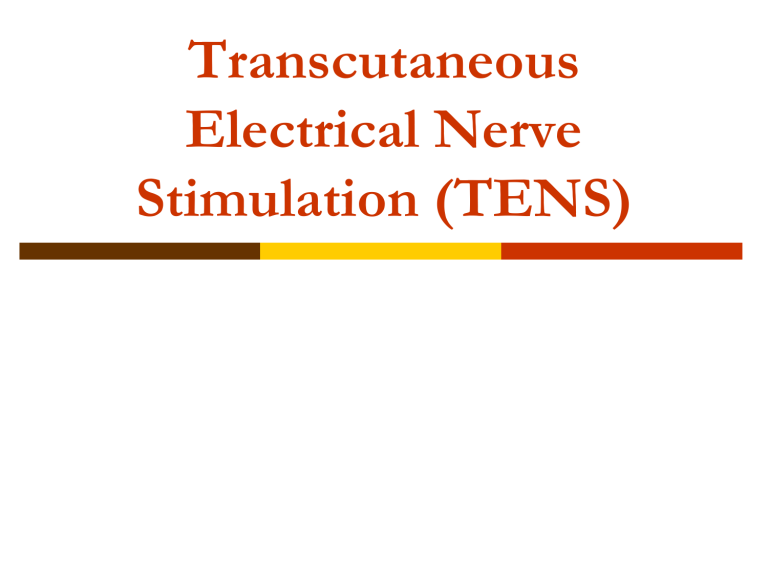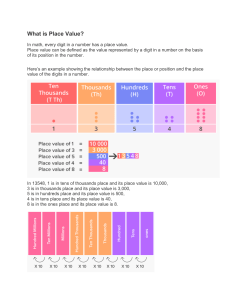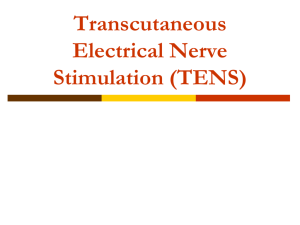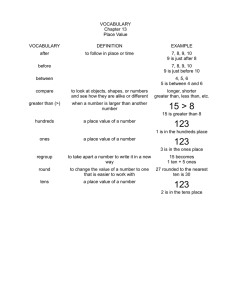Uploaded by
Saranya Gobikanna
TENS: Transcutaneous Electrical Nerve Stimulation Overview
advertisement

Transcutaneous Electrical Nerve Stimulation (TENS) Main Points: 1. 2. 3. 4. 5. 6. Mechanism of pain. Functions and features of TENS unit . Circuit Design. Realizing Design into Hardware. Results. Conclusions . Mechanism of Pain: Pain is felt as a result of the brain's response to electrical (neural) and chemical (hormonal) changes in the body as a result of damage. Signals from damage or injury are picked up by sensory receptors in nerve endings. The nerves then transmit the signal via the nerves to spinal cord and brain. Mechanism of Pain: Pain Relief: Pain can be managed in the short term using analgesics, but long-term use can be detrimental to the patient's health. Side effects of the long use of analgesics may affect on liver, kidney or stomach. In many cases where pain is constant, a medical practitioner or physiotherapist may recommend the use of a TENS unit. Why TENS? Because it is safe, effective and virtually with no side effects. Functions and Features of TENS: A TENS unit provides electrical stimulation to the painful area using electrodes attached to the skin. Some scientists say: electrical signal v nerve sensation stops v natural pain relieving substances (endorphins) v no pain massages to brain v no pain. Theories Gate Controlled Theory Opiate mediated theory Local Vasodilation Acupuncture Features: 1- Two different modes: a- Continuous (continuous stream) b- Intermittent (short bursts) Usually the continuous mode is used but for long term treatment intermittent mode is used We can control three variables: a- Output voltage. b- Width of the pulses. c- Pulse rate. Features: Continuous Mode: Output Voltage: Adjustable from 12V to 80V Current – 1to 50mA Pulse Rate: Adjustable from 4.6Hz to 410Hz. Pulse waves : sine, rect, spike, triangular, biphasic, square Pulse Width: Adjustable between 70 and 320 µs. Intermittent Mode : Duty cycle: 24% at 1.2Hz Circuit Design of the Device: 9 volts battery Step up converter: composed of transformer and DC to DC converter. Switching oscillator. Intermittent oscillator. Results: Continuous mode: The output volt=79v. The frequency=362 Hz. Results: Intermittent mode: The output volt=82v The frequency=108 Hz. Device: This device might be used to treat the face muscles. (Bell's Palsy disease) , This is often due to the partial facial paralysis that occurs on one side of the face.In this case the face muscle is small compared to other muscles ,so we need small electrodes to capture the effected muscles .




